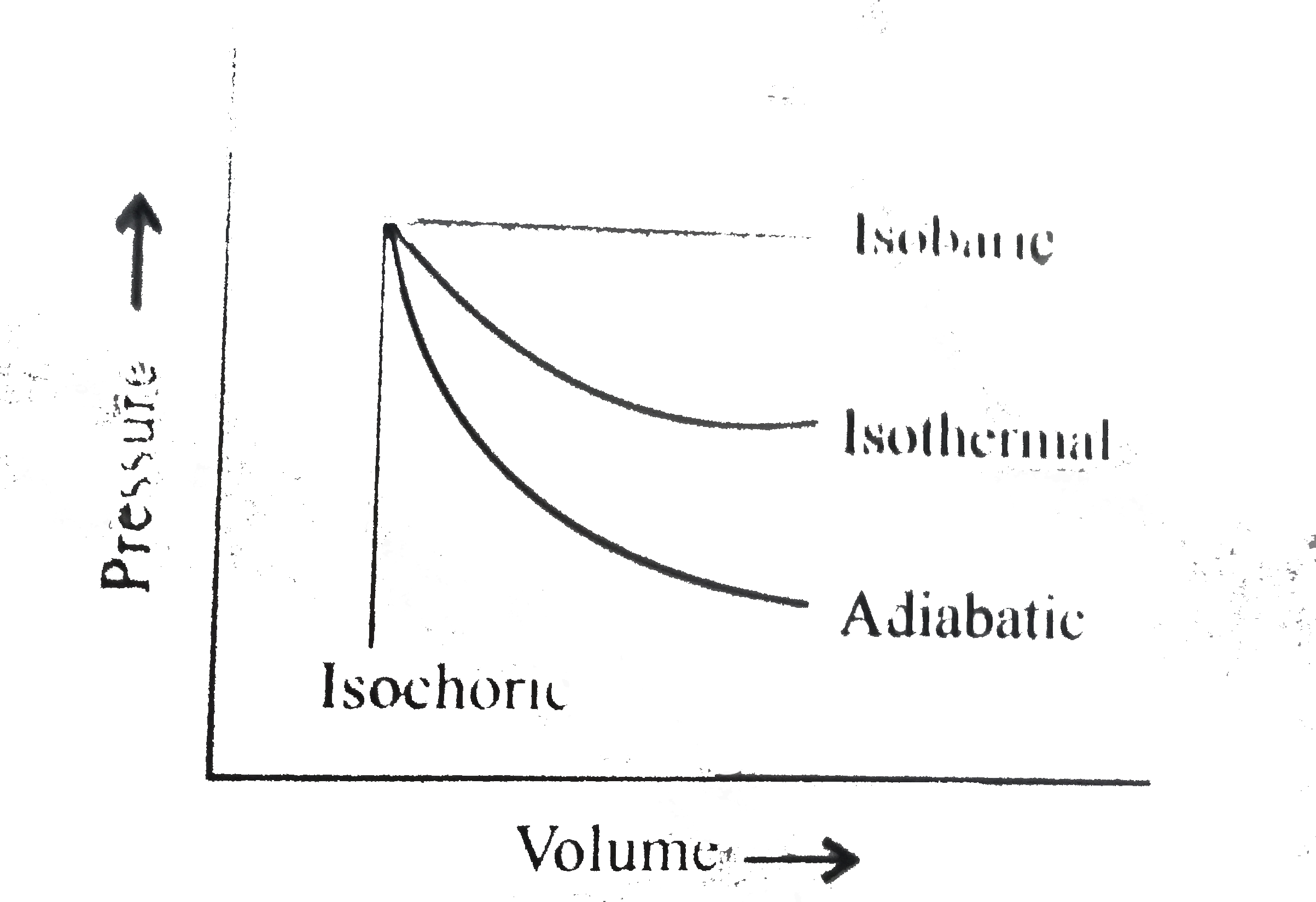Calculate q,w,ΔU, and ΔH for this isothermal reversible expansion of 1mole of an ideal gas from an initial pressure of 10.0 bar to final pressure of 100bar at a constant pressure of 273K.
In isothermal process as temperature remains constant both ΔU and ΔH are zero.
ΔU=0,ΔH=0
Applying the first law of thermodynamics.
ΔU=w+Q
0=w+Q
or Q=−w=−2.303nRTlog10.(P1P2)
=−2.303×1×8.314×273log10.(101000)
=5227.169J=5.227kJ
Topper's Solved these Questions
- THERMODYNAMICSBOOK - CENGAGE CHEMISTRYCHAPTER - THERMODYNAMICSEXERCISE - Ex 6.3
27 Videos
- THERMODYNAMICSBOOK - CENGAGE CHEMISTRYCHAPTER - THERMODYNAMICSEXERCISE - Ex 6.4
16 Videos
- THERMODYNAMICSBOOK - CENGAGE CHEMISTRYCHAPTER - THERMODYNAMICSEXERCISE - Ex 6.1
26 Videos
- STOICHIOMETRYBOOK - CENGAGE CHEMISTRYCHAPTER - STOICHIOMETRYEXERCISE - Archives Subjective
33 Videos
Similar Questions
Calculateq,W,ΔU and ΔH for the isothermal reversible expansion of one mole of an ideal gas from an initial pressure of 1.0 bar to a final pressure of 0.1 bar at a constant temperature of 273K.
View SolutionCalculate q,W,ΔU and ΔH for the isothermal reversible expansion of one mole of an ideal gas from an initial pressure of 1.0¯ to a final pressure of 0.1¯ at a constant temperature of 273K.
View Solution
Knowledge Check
Calculate Q and w for the isothermal reversible expansion of one mole an ideal gas from an initial pressure of 1.0 bar to a final pressure of 0.1 bar at a constant temperature of 273 K respectively.
A5.22kJ, -5.22 kJB−5.22kJ,5.22kJC27.3 kJ, -27.3 kJD−27.3kJ,27.3kJThe pressure-volume of varies thermodynamic process is shown in graphs:

Work is the mole of transference of energy. It has been observed that reversible work done by the system is the maximum obtainable work.
wrev>wirr
The works of isothermal and adiabatic processes are different from each other.
wisothermal reversible=2.303nRTlog10(V2V1)
=2.303nRTlog10(P2P1)
wadiabatic reversible=CV(T1−T2)
The q value and work done in isothermal reversible expansion of one mole of an ideal gas from initial pressure of 1 bar to final pressure of 0.1 bar at constant temperature 273K are:A5.22kJ,−5.22kJB+6.22kJ,6.22kJC5.22J,5.22JD−6.22J,−6.22J
Calculateq,W,ΔU and ΔH for the isothermal reversible expansion of one mole of an ideal gas from an initial pressure of 1.0 bar to a final pressure of 0.1 bar at a constant temperature of 273K.
View SolutionCalculate q,W,ΔU and ΔH for the isothermal reversible expansion of one mole of an ideal gas from an initial pressure of 1.0 bar to a final pressure of 0.1 bar at a constant temperature of 273K.
View SolutionCalculate Q,W,ΔE and ΔH for the isothermal reversible expansion of 1 mole of an ideal gas from initial pressure of 1.0 bar to final pressure of 0.1bar at constant temperature of 273K.
View SolutionCalculate q,w, and ΔU for the isothermal reversible expansion of one mole of an ideal gas from an initial pressure of 2.0 bar to a final pressure of 0.2 bar at a constant temperature of 273K.
View SolutionCalculate the ΔH for the isothermal reversible expansion of 1 mole of an ideal gas from initial pressure of 0.1¯ at a constant temperature at 273K.
View SolutionCalculate q,w, ΔU and ΔH for the reversible isothermal expansion of one mole of an ideal gas at 127∘C from a volume of 10dm3 to 20dm3.
View Solution
